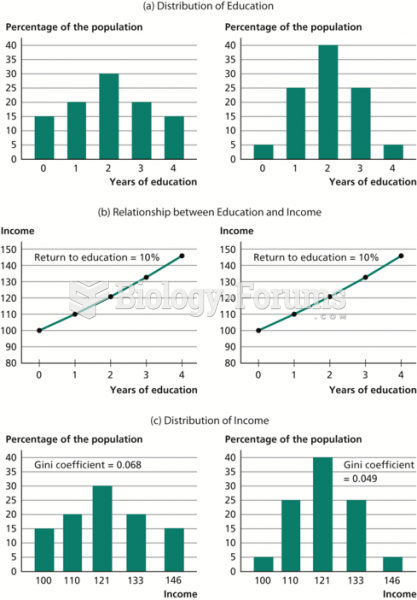Which state had the lowest per capita income in 2010?
a. Alabama
b. Mississippi
c. Idaho
d. Louisiana
Question 2
Which state had the highest per capita income in 2010?
a. District of Columbia
b. Connecticut
c. Massachusetts
d. New Jersey
Question 3
When considering capacity to fund education, what other factor should be considered when using per capita income?
a. Per capita property values
b. Gross state product
c. Per capita sales tax
d. Cost of living index
Question 4
Which nation has the lowest capacity in terms of per capita GDP to fund education?
a. Uganda
b. Mali
c. Democratic Republic of Congo
d. Rwanda
Question 5
Which nation has the highest capacity in terms of per capita GDP to fund education?
a. Luxembourg
b. Denmark
c. Sweeden
d. Finland
Question 6
Which of the following statements is not true?
a. A school district with 140,000 of per capita income per student has equal capacity with the same amount of funds.
b. A school district with 140,000 of per capita income per student may not have the same capacity as a district with 140,000 of per capita property value per student.
c. Actual capacity may be difficult to determine.
d. Capacity does not matter effort matters.
Question 7
Which of the following statements is true?
a. It is more difficult for states to fund education programs with large school districts than to fund districts with many smaller school districts.
b. It is easier for states to fund education programs with large school districts than to fund districts with many smaller school districts.
c. It costs the same for states to fund education programs with large school districts as it does for those with many smaller school districts.
d. The size of the school district does not matter when it comes to funding.
Question 8
Which of the following can accurately be said of two school districts with the same number of students, the same per capita property and income levels, but where one has 10 and the other has 20 of its students eligible for special education services?
a. One school district has more capacity than the other.
b. The district with 20 of its students eligible for special education has less capacity than the district with 10 eligible for special education.
c. The two districts have the same level of capacity and should spend the same amount of monies.
d. It will cost more to educate the students in the district with 20 of its students qualifying for special education services than it will in the district with 10 qualifying if both districts want to educate all students to equal levels.
Question 9
Which of the following might be a better measure of a states capacity to fund education?
a. Personal income
b. Property values
c. Asset to liability ratio
d. Moodys bond rating
Question 10
Capacity and effort can be viewed on a dual axis construct that contains the following quadrants
a. high effort and low effort, high capacity and low capacity.
b. high capacity and low capacity, high capacity and low effort.
c. high effort and high capacity, low effort and low capacity, high effort and low capacity, and low effort and high capacity.
d. low capacity, low effort, high capacity, high effort.
Question 11
Not including loopholes, the federal tax system is considered to be proportional
Indicate whether the statement is true or false.







